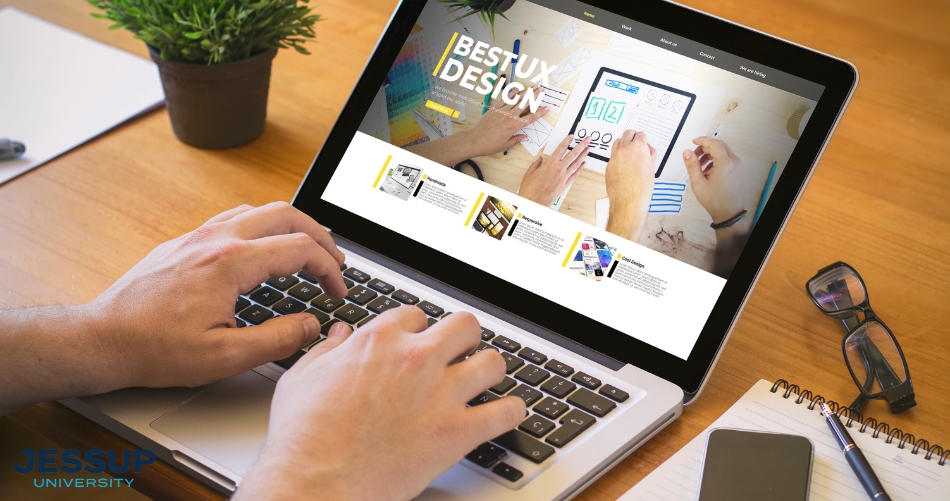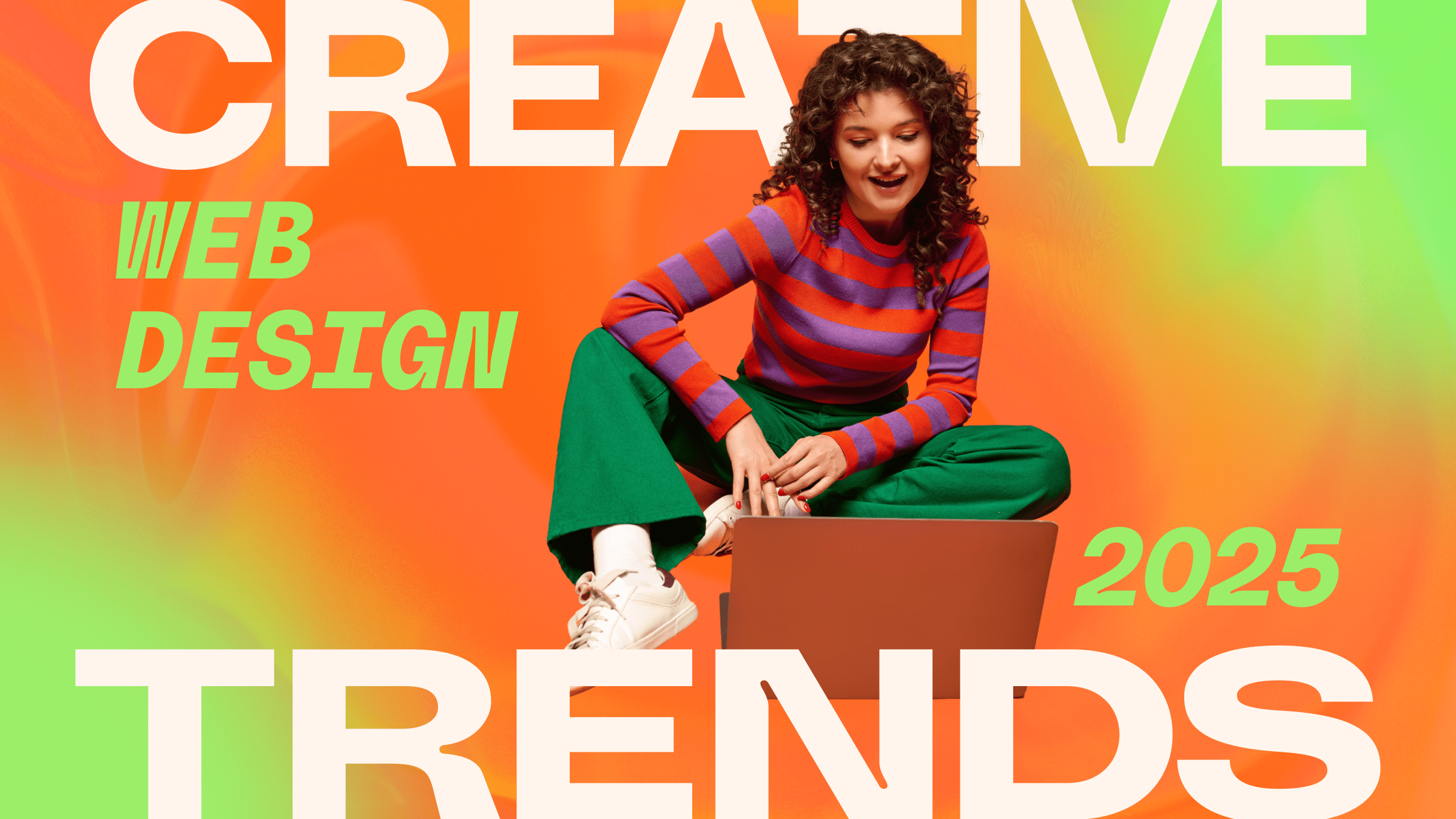The importance of responsive layouts explained by a top web design company
Wiki Article
Exploring Innovative Trends in Web Design for Modern Organizations
The landscape of web design is continuously advancing, mirroring the dynamic demands of contemporary organizations. Recent trends highlight a preference for minimalism, bold typography, and appealing interactivity. Companies increasingly focus on user experience through mobile-first principles and individualized content. In addition, an emphasis on sustainability is obtaining traction. Understanding these patterns is necessary for businesses aiming to stick out in a congested industry. What ramifications do these shifts hold for the future of digital interaction?Embracing Strong Typography
Bold typography has emerged as a specifying component in contemporary web design, recording attention and communicating messages with striking clearness. This pattern focuses on visually impactful message that enhances user interaction and brand name identification. Developers frequently use extra-large font styles and one-of-a-kind typefaces to create a hierarchy, guiding viewers via content perfectly.
The calculated use strong typography permits efficient storytelling, allowing brand names to communicate their worths succinctly. It serves not only visual objectives but also practical ones, as it improves readability across tools and display sizes.
As internet sites complete for user focus, vibrant typography attracts attention in a saturated electronic landscape. Its flexibility enables developers to explore contrasting formats and shades, better amplifying its efficiency. Ultimately, accepting bold typography stands for a shift towards more meaningful and communicative web design, fostering a deeper connection between brands and their audiences.
The Rise of Minimalist Layout
As digital environments end up being significantly cluttered, the rise of minimal layout uses a renewing option that prioritizes simpleness and capability. This design approach strips away unnecessary components, enabling material to take center phase. By concentrating on clean lines, sufficient white area, and a minimal color combination, minimalist design boosts user experience and improves navigation.Organizations embracing this fad goal to convey their brand message clearly and efficiently, promoting a feeling of calm and clarity. The absence of diversions assists users concentrate on essential details, causing enhanced engagement and conversion rates. In addition, minimal layout aligns well with mobile-first approaches, guaranteeing that websites stay available and user-friendly across numerous gadgets.
Inevitably, the rise of minimalist layout mirrors a broader shift in the direction of prioritizing user needs and preferences, making it a powerful device for modern organizations wanting to make a lasting effect in the digital landscape.
Immersive Animations and Interactivity
While numerous internet developers accept minimal appearances, one more engaging fad gaining grip is making use of immersive animations and interactivity. This method enhances user interaction by developing fascinating experiences that attract site visitors right into the web content. Designers use dynamic elements such as animated backgrounds, scrolling results, and interactive infographics to interact complex ideas in an available way.These animations not just give visual interest however likewise guide individuals through the navigating process, making interactions a lot more instinctive. Hover effects and animated changes can urge customers to discover even more, leading to raised time spent on the website.
Furthermore, this fad straightens with the wider movement in the direction of narration in web design, where animations offer as narrative devices that convey brand messages efficiently. By integrating immersive computer animations and interactivity, organizations can differentiate themselves in a congested online landscape, eventually improving user contentment and brand loyalty.
Mobile-First Layout Concepts
Mobile-first design principles stress focusing on user experience by guaranteeing sites function perfectly on smaller displays. This method incorporates responsive format strategies that adapt to numerous tool sizes while maintaining aesthetic honesty. In addition, it concentrates on touchscreen navigation style, enhancing use for mobile individuals.Prioritizing User Experience
How can designers properly prioritize user experience in a significantly mobile-centric world? Highlighting mobile-first style principles is vital, as customers mostly involve with websites with mobile devices. This strategy motivates developers to streamline material, ensuring it is accessible and quickly obtainable on smaller screens. Trick techniques include streamlining navigating, decreasing load times, and utilizing touch-friendly aspects that boost interactivity. Additionally, focusing on clear typography and user-friendly designs can significantly boost user complete satisfaction. Developers should continually collect user responses to improve their techniques, adjusting to evolving user requirements and preferences. By focusing on these components, services can develop an appealing digital experience that fosters loyalty and drives conversions, ultimately aligning with the assumptions of today's mobile individuals.Receptive Format Techniques
Designers accept receptive layout techniques to create flexible and flexible web experiences that provide to various screen sizes. This technique focuses on mobile-first layout concepts, guaranteeing peak capability on smaller gadgets before scaling up for bigger displays. By using fluid grids, flexible photos, and media questions, developers can preserve a natural visual identity throughout all systems. This approach not just enhances user engagement however also enhances search engine rankings, as mobile-friendly websites are favored by search formulas. In addition, receptive designs permit companies to reach a more comprehensive target market, suiting users on desktops, mobile phones, and tablets alike. Overall, implementing these strategies is vital for modern-day web design, guaranteeing that businesses continue to be competitive in an ever-evolving electronic landscape.Touchscreen Navigation Design
With the rise of mobile tools, touchscreen navigation has actually ended up being a basic aspect of web design. Developers are significantly embracing mobile-first concepts to enhance user experience and involvement. Website Design Agency. Effective touchscreen navigating prioritizes bigger switches and user-friendly gestures, permitting customers to connect conveniently with material. This technique lowers stress and motivates exploration, as customers can navigate seamlessly with their fingers. Furthermore, incorporating swipe motions and tap functionality caters to the all-natural behaviors of mobile users. Responses systems, such as visual cues and computer animations, enhance usability further by confirming activities. As touchscreens control user interactions, using these design aspects not only straightens with contemporary assumptions but additionally fosters a much more pleasurable and easily accessible searching experience for all customersPersonalized User Experiences
What makes a customer feel genuinely involved on a web site? The response usually lies in individualized user experiences. By tailoring web content and navigation to specific preferences, services can develop a meaningful connection with their audience. This customization can be accomplished via different approaches, such as examining user actions, using cookies, and providing customized referrals based on previous communications.For circumstances, ecommerce systems that suggest items based on browsing history not only boost user experience yet likewise enhance conversion rates. In addition, incorporating dynamic content that adjusts to the user's location or time of day can additionally enrich involvement.
Furthermore, tailored introductions or messages can make customers really feel valued and recognized. As modern-day businesses venture web design company to attract attention in a competitive electronic landscape, accepting tailored user experiences comes to be vital, fostering loyalty and encouraging repeat sees. Eventually, this technique transforms a conventional internet site into an interactive platform that resonates with its target market.
Sustainability in Web Design
As the electronic landscape continues to advance, the relevance of sustainability in web design has actually obtained substantial focus. Developers are increasingly mindful of the ecological influence their developments can have, triggering a shift towards eco-friendly practices (Web Design Agency). Lasting web design concentrates on maximizing internet sites to reduce energy usage and carbon footprints. Strategies include making use of minimalistic style principles, optimizing images, and employing efficient coding practices to boost loading ratesAdditionally, the option of hosting companies plays a vital duty; numerous designers are now opting for environment-friendly organizing solutions powered by renewable resource. By prioritizing ease of access and straightforward navigation, lasting layouts additionally satisfy a broader target market, improving functionality. This aware method not just interest environmentally-minded consumers but additionally contributes to the total long life and effectiveness of web sites. Ultimately, sustainability in web design mirrors an expanding pattern towards responsible electronic practices that line up with contemporary business values.

Frequently Asked Concerns
Just How Can I Pick the Right Color Design for My Website?
To select the appropriate color system for a site, one ought to take into consideration the brand name's identity, target market, and emotional impact. Making use of color theory and testing mixes can enhance user experience and aesthetic appeal considerably.What Are the Best Devices for Prototyping Web Layouts?
The best devices for prototyping internet styles consist of Figma, Map out, Adobe XD, and InVision. These systems supply instinctive interfaces, partnership features, and extensive collections, making them suitable for designers to create and improve their ideas effectively.Just how Do I Measure the Effectiveness of My Web Design?
To gauge web design effectiveness, one ought to assess user involvement metrics, conversion prices, and functionality feedback (web design company). A/B screening and heatmaps can also supply understandings into user actions, assisting required modifications for improved efficiency and user experienceWhat Prevail Web Design Mistakes to Avoid?
Usual web design blunders consist of chaotic layouts, bad navigating, slow packing times, lack of mobile optimization, insufficient contrast, and ignoring user responses. Avoiding these challenges improves user experience and increases general effectiveness of the site.How Frequently Should I Update My Site Design?
An internet site style need to be updated every 2 to 3 years, or sooner if substantial changes in branding or modern technology happen. Normal updates maintain the website fresh, practical, and lined up with present user assumptions.
Report this wiki page